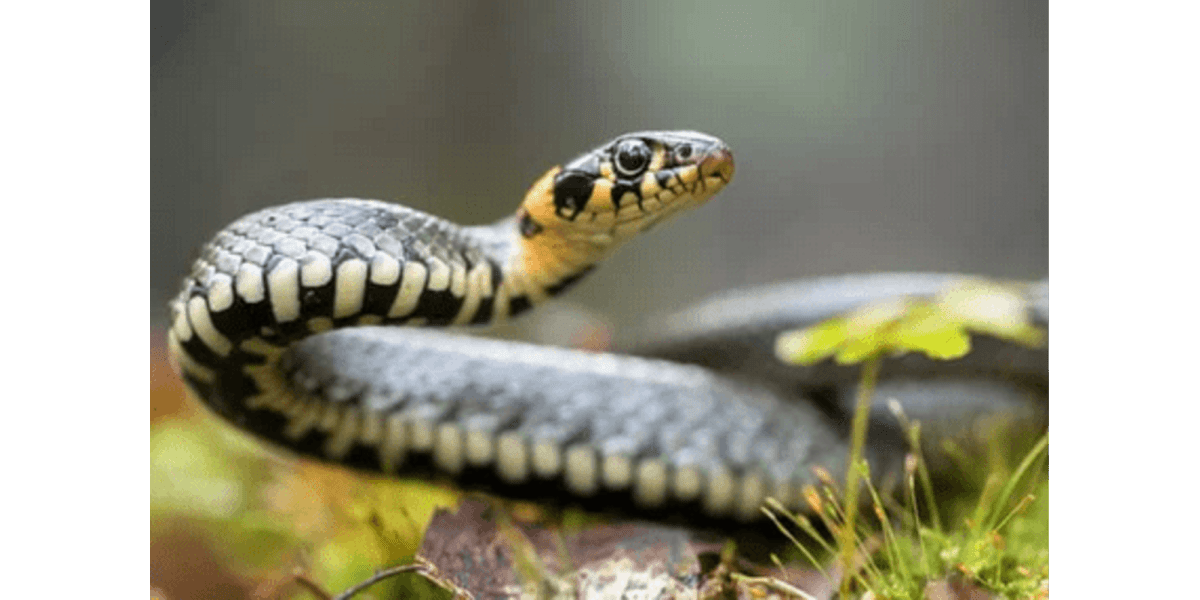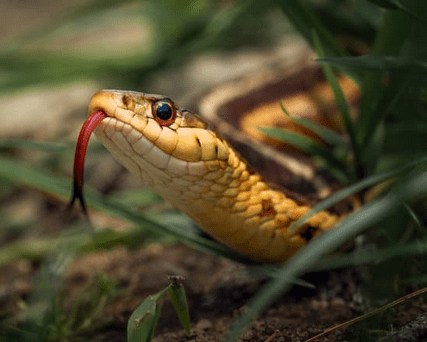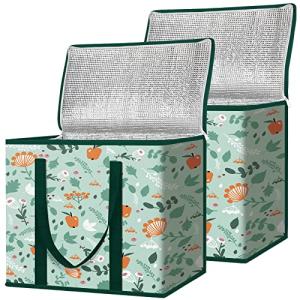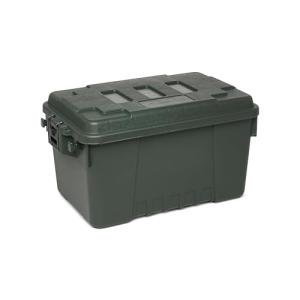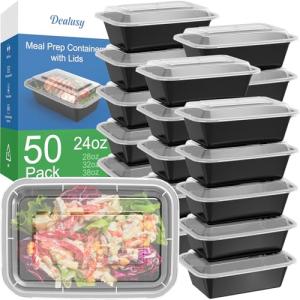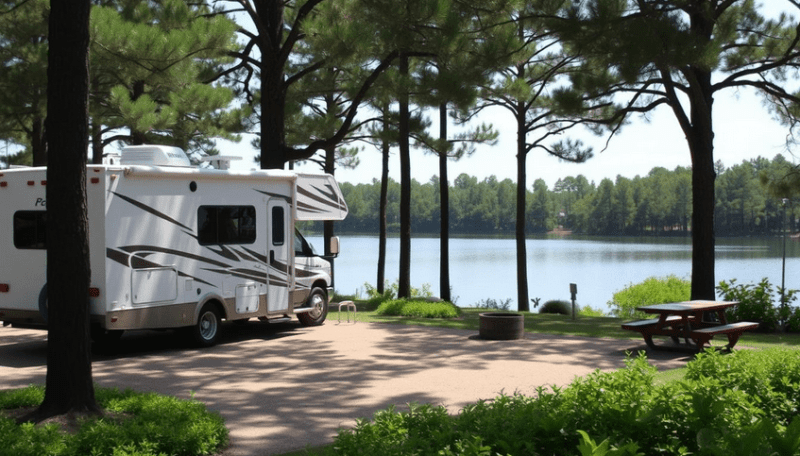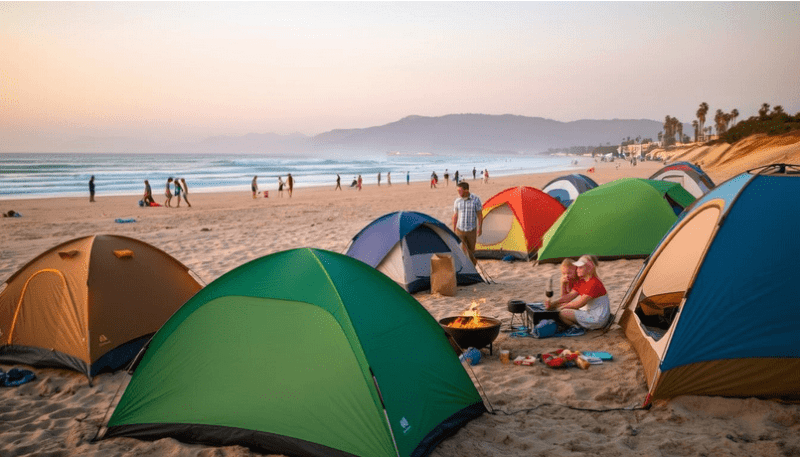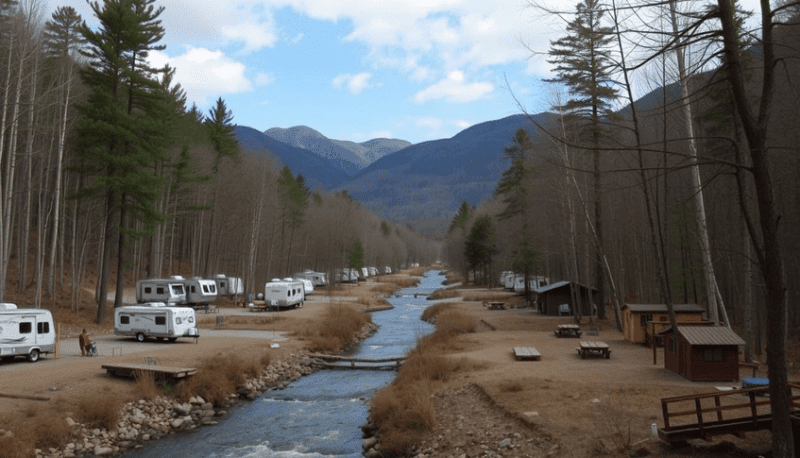Camping lets people enjoy nature, but it also means meeting wildlife. Snakes are common in many camping areas, and knowing how to deal with them is important. Learning about snake behavior helps campers stay safe. It’s easier to avoid problems when knowing where snakes like to hide or when they are most active.

Choosing the right campsite is important. Look for spots away from tall grass and piles of wood or rocks, as these are places snakes might like. Simple actions such as keeping a clean campsite and wearing the correct clothing can reduce the risk of snake bites.
Being prepared is key when it comes to nature. Packing snake repellents and knowing first aid for snake bites can make a big difference. This helps ensure campers can focus on the fun parts of the trip instead of worrying about snake encounters.
Key Takeaways
- Understanding snake behavior reduces risks.
- Use repellents and choose campsites wisely.
- Pack proper gear and know first aid for safety.
Understanding Snakes in Camping Environments
Snakes are a common encounter in natural settings. Learning about different types of snakes and their behaviors can help keep campers safe and prepared during their outdoor adventures.
Identifying Venomous and Non-Venomous Snakes
Identifying snakes accurately is crucial for safety. Venomous snakes often have distinct head shapes, such as broad, triangular heads. Pit vipers, like rattlesnakes, have elliptical pupils and heat-sensing pits between their eyes and nostrils. Other venomous snakes, such as coral snakes, display red, yellow, and black band patterns.
Non-venomous snakes usually have round pupils and a more uniform body color. While some, like the gopher snake, may mimic the appearance and behavior of venomous snakes, they are generally harmless. It's useful to familiarize oneself with local snake species to better differentiate between them.
Snake Habitats and Behavior
Snakes are often found in places where they can find food and shelter. They prefer environments such as grassy fields, rocky areas, and woodlands. These reptiles can also bask in sunny spots to regulate their body temperature.
Snake behavior largely depends on the season and time of day. During warmer months, snakes are more active and visible. Some species are nocturnal, so they might be seen at night. Understanding these patterns helps campers know when they’re most likely to encounter snakes. Moreover, snakes are generally not aggressive and tend to avoid humans, striking only if threatened.
Choosing the Right Campsite to Prevent Snake Encounters

When selecting a campsite, certain factors can help avoid unpleasant snake encounters. Utilizing natural geographic features as barriers provides a sense of security against these uninvited guests.
Factors to Consider for a Snake-Free Location
Picking a location is key in preventing snakes. Clear the area of debris like rocks or fallen branches. These are perfect hiding spots for snakes. Choose elevated campsites whenever possible; snakes prefer flat terrain for ease of movement.
Avoid camping near water, especially in warm weather. Water sources often attract wildlife, including snakes. Keep a safe distance from densely wooded areas. Snakes may be more active where there is ample cover.
Check for any signs of snakes when setting up camp. Look for snake tracks or skin. These are indicators of nearby snake presence. Knowing what to look for greatly reduces surprise encounters.
Using Natural Geography as a Deterrent
Natural geography can help prevent snake encounters. Utilize open spaces surrounded by barriers like cliffs or steep terrain. These serve as natural deterrents against snakes.
Consider camping near sandy areas or open fields. Snakes typically avoid these places due to lack of cover and lower temperatures at night. This makes them less appealing to these reptiles looking to hide.
Natural features like cool rock surfaces or exposed cliffs can also deter snakes. When used wisely, these features create a safer camping experience.
Effective Snake Repellents and Deterrents
When camping, it's important to consider ways to keep snakes away from your campsite. Various methods, including both commercial products and natural solutions, can help deter snakes and minimize encounters.
Commercial Snake Repellents
Commercial snake repellents are available in various forms, such as sprays and granules. These products often contain ingredients like sulfur, naphthalene, or essential oils, which are known to repel snakes.
Products like Snake Away or Ortho Snake B Gon are popular choices. They work by creating scents unpleasant to snakes, which can deter them from entering the treated areas.
These repellents should be applied according to the manufacturer's instructions. Consistent reapplication may be necessary, especially after rain.
Homemade and Natural Repellents
For those preferring natural solutions, several options can help keep snakes at bay. Essential oils, such as cinnamon and clove oil, are said to repel snakes when used around tents or campsite perimeters.
Some campers use a mixture of white vinegar and ammonia. The strong odors of these substances can create a barrier that snakes avoid.
Natural methods may require frequent application to maintain their effectiveness. Combining different natural repellents can potentially enhance their efficacy.
Consider employing these methods in conjunction with each other for the best results.
Camping Practices to Keep Snakes Away
Keeping snakes at bay while camping involves thoughtful planning and action. This includes organizing a tidy campsite, storing food correctly, and setting up barriers to prevent snake entry.
Maintaining a Tidy Campsite
A clean campsite can help prevent snakes from visiting. Snakes are often drawn to areas where they can find food or shelter. Campers should remove trash and food scraps immediately as these may attract rodents, which in turn draw snakes.
Firewood should be stored at a distance from sleeping areas because it can create a hiding place for snakes. Refrain from leaving clothes or bedding on the ground. Keeping items elevated helps avoid unexpected visits from these creatures.
Inspect the campsite regularly for signs of snakes. Check under rocks, logs, and any equipment left outside overnight. This not only helps in maintaining cleanliness but also ensures there are no hidden dangers lurking around.
Proper Food Storage Techniques
Storing food properly is vital to avoid attracting snakes. Use airtight containers to store all types of food. This prevents food odors from escaping and attracting animals. Ensure these containers remain sealed when not in use.
Keep all food, trash, and coolers in a designated area, away from tents. This storage spot should be elevated and secure. Hanging food supplies on a tree limb or using a bear locker can help achieve this.
Dispose of any food waste promptly. Use designated trash bins or take waste with you if none are available. This limits the chances of rodents being drawn to the campsite.
Setting Up Physical Barriers
Creating physical barriers can deter snakes from entering the camping area. Small fences or snake guards can be set up around the campsite perimeter. These barriers should ideally be made from materials that provide no opportunity for snakes to slither through.
Some campers use snake repellant around their site. Commercial repellants are available and should be applied around the entire perimeter following instructions carefully.
Raising tents and sleeping equipment off the ground helps too. Use a camping cot instead of sleeping directly on the ground. This not only makes it harder for snakes to reach but also provides extra comfort.
Gear and Clothing for Snake Safety
When camping, wearing proper gear can help keep you safe from snakes. Protective footwear and additional gear play important roles in preventing bites.
Choosing the Right Footwear
Footwear is crucial for snake safety. Snake boots are highly recommended. These boots cover your feet and ankles, giving them a tough barrier against bites. They often feature materials like leather or rubber, which are hard for snakes to penetrate.
It's wise to choose boots that are comfortable yet sturdy for long hikes. Waterproof options can also be beneficial for unexpected weather. Always pair snake boots with thick socks to further reduce the risk of bites.
Remember, regular hiking boots might not offer the same level of protection as snake boots. It's essential to ensure a snug fit to maintain stability on rough terrain, reducing the chance of tripping.
Additional Protective Gear
Besides footwear, other protective gear can enhance safety. Gaiters are an effective choice for guarding your lower legs. They are worn over the lower pants and boots, offering an extra layer against bites.
Wearing long pants made of heavy fabric can shield your legs. Some campers even use snake-proof chaps or leggings for added safety. These cover more of the body's vulnerable spots.
It's also useful to wear gloves when handling items near camp, where snakes could hide. Camping gear like tents and sleeping bags with secure closures can help keep snakes out of your sleeping area.
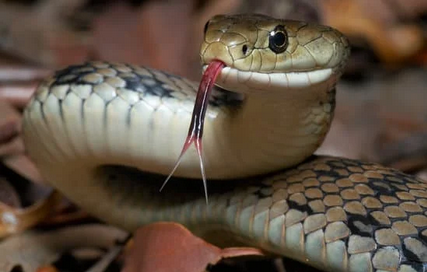
Responding to Snake Encounters and Bites
Staying safe when encountering snakes involves taking immediate and effective actions. Learning how to prevent bites and what to do if bitten can significantly reduce risks.
Preventing Bites During Encounters
When a snake is spotted, back away slowly. Quick movements can startle snakes, increasing the chance of a bite. Keep a safe distance and observe calmly.
Wear long pants and boots when in snake-prone areas. These provide a layer of protection against bites. Stay on established paths to avoid disturbing hidden snakes.
Camping tips: Store food securely to avoid attracting snakes. Avoid handling snakes, even if they appear dead, as they may still bite reflexively.
Teach children to respect snakes and maintain distance. Educate them about snake habitats and signs. Learn to recognize potentially dangerous snakes in the area.
First Aid for Snake Bites
If bitten, remain calm and move slowly.
Frequently Asked Questions
Camping in areas with snakes can be managed safely by following simple rules and precautions. By understanding how to respond to encounters and setting up campsites properly, campers can avoid unwanted interactions.
What to do if you encounter a snake while camping?
If a snake is spotted, remain calm and slowly step back. Avoid sudden movements. Most snakes will not chase humans and prefer to escape.
How do you safeguard your campsite from snakes?
Keep the campsite clean and free of food scraps that might attract prey for snakes. Set up camp away from tall grass, piles of leaves, or rock crevices.
Are there effective snake repellents for campers?
Many products claim to repel snakes, but their effectiveness varies. Natural remedies like sulfur or clove oil are sometimes used, but none are guaranteed. The best prevention is awareness and precaution.
What measures should be taken at night to prevent snake bites?
Zip tents and keep items off the ground. Use a flashlight to check shoes, sleeping bags, and gear before use. A properly maintained fire can also deter snakes.
Can snakes penetrate tents, and how to reinforce your tent against them?
Snakes rarely enter tents unless there are openings. Ensure tents are fully zipped and inspect for any tears. Adding a camping mat around the tent perimeter can reduce the chance of snakes approaching.
What historical methods did people use to deter snakes while outdoors?
Historically, people often used barriers such as moats or burning tires. They also relied on animal guardians, like dogs, and natural deterrents like certain plant oils to keep snakes at bay.
DISCLAIMER
This document is provided for general information purposes only and should not be relied upon as providing legal advice, technical, or specific operational guidance to the reader, whether as to the practices described in the document or the applicable legal requirements and regulations. bestcampingdeals.com expressly disclaims any responsibility for liability arising from or related to the use or misuse of any information in this document.
